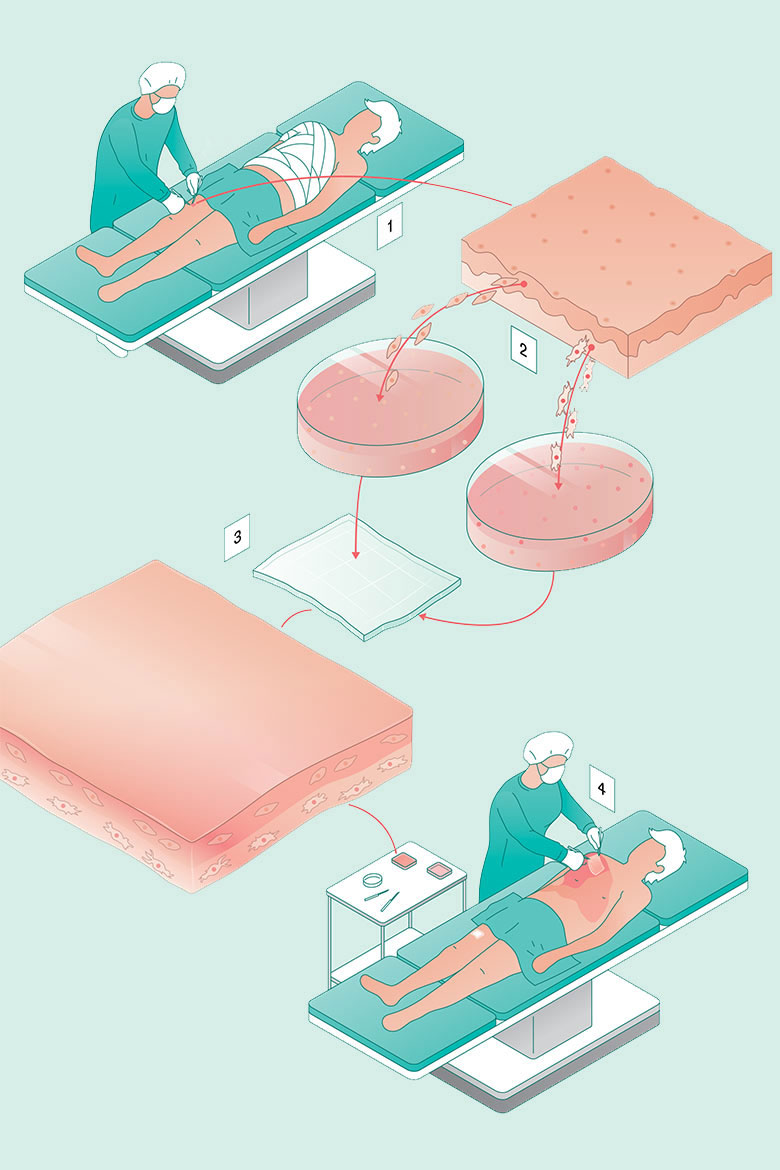How it works
Personalised skin from the lab
Deep burns and burns over large areas are today treated by transplanting a patient’s own skin. A spin-off company from the University of Zurich is now cultivating artificial skin from the body’s own cells.
Deep burns and burns over large areas are today treated by transplanting a patient’s own skin. A spin-off company from the University of Zurich is now cultivating artificial skin from the body’s own cells.

Illustration: ikonaut
3 — Hydrogel as connecting material
The cultured stem cells are applied to a collagen gel to form a two-layer ‘plaster’ that is one millimetre thick: first the cells of the subcutis, then of the epidermis. This collagen is taken from cattle, just as is used in cosmetic surgery. The hydrogel with the cells in it is put into liquid form using a special procedure, then poured into a frame where it is compressed to extract some of its water.
2 — Growing the body’s own cells in the lab
Cutiss, a spin-off company from the University of Zurich, has now developed a different method: they remove a skin sample about the size of a postage stamp from the injured person and use this to cultivate stem cells of the epidermis and subcutis (the upper and lower layers of the skin).
1 — Scarring in cases of large-area skin burns Severe, extensive burns and injuries deep in the skin are treated today with grafts of the patient’s own skin. In order to get enough of it, surgeons have to keep injuring the patient’s healthy skin. What’s more, the scar tissue that results from transplants is rigid and does not grow with the patient. This is why many follow-up operations are needed, especially with children.
Um Horizonte besser Ihren Bedürfnissen anpassen zu können, benutzen wir folgende Services, die Cookies auf Ihrem Endgerät speichern:
- Google Analytics
